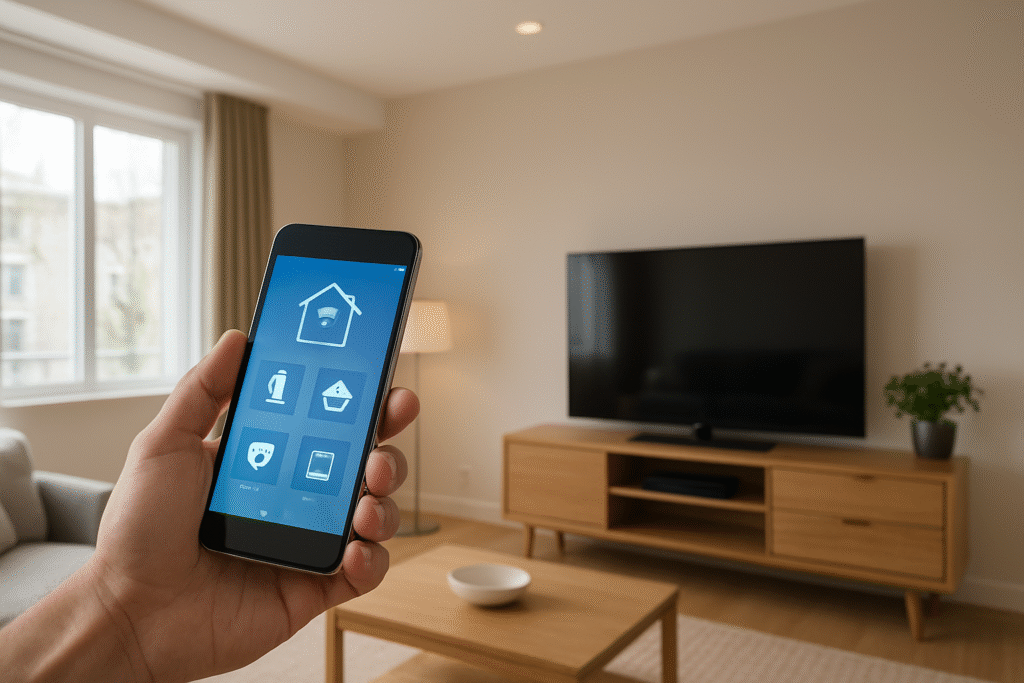Smart home insurance: what do you need to get one?

With the rise of smart devices like video doorbells, motion sensors, and connected thermostats, many homeowners are now turning their houses into “smart homes.”
These upgrades not only offer convenience and security but also open the door to a new kind of coverage: smart home insurance. But what exactly is it, and what do you need to qualify for one? Let’s break it down.
What Is Smart Home Insurance?
Smart home insurance is a type of homeowners insurance policy that offers discounts, incentives, or specialized coverage for homes equipped with certain smart technologies.
These technologies help prevent risks like fire, water damage, or burglary, and insurers are increasingly recognizing their value.
For example, a leak detection system can alert homeowners about a broken pipe before it causes major flooding, saving both the homeowner and the insurance company from costly repairs.
Some insurers even partner with tech companies to offer free or discounted devices as part of your insurance package, like smart smoke detectors or security systems.
What Types of Smart Devices Qualify?
Not all gadgets will make a difference in your policy, but insurers typically focus on risk-reducing devices, such as:
- Smart smoke detectors;
- Smart water leak sensors;
- Smart thermostats (which can help prevent pipe freezes);
- Smart door locks and garage door openers;
- Security cameras and motion detectors;
- Connected alarm systems.
The more your devices contribute to safety, the better the chance you’ll qualify for benefits or discounts.
Do You Need a Fully Connected Home?
Not necessarily. You don’t have to turn your home into a tech showroom to benefit. In many cases, just one or two smart devices, like a security camera or a leak sensor, may be enough to trigger a small discount or qualify you for a specific policy.
That said, the more comprehensive your system, the more likely it is to lower your risk profile and reduce your premiums. Some providers even offer tiered benefits based on how connected your home is.
What Do You Need to Get Smart Home Insurance?
Here’s a step-by-step checklist to help you prepare:
1. Inventory of Smart Devices
Make a list of all your current smart home devices. Include brand, model, and where each one is installed. Your insurer may ask for this information to verify eligibility.
2. Photos or Proof of Installation
Some providers might request photos or confirmation that your devices are active and properly installed. For example, having a smart lock sitting in its box doesn’t count — it needs to be in use.
3. Internet Connectivity
Because smart devices rely on Wi-Fi or Bluetooth, insurers typically assume you have a stable internet connection. They may also ask whether your devices are monitored through a subscription service (e.g., ADT, Ring).
4. A Standard Home Insurance Policy
Smart home insurance is not usually a separate policy, it’s an upgrade or endorsement to your existing homeowners policy. So you’ll need a base policy first, then add smart features if your insurer allows.
5. Choose a Compatible Insurance Provider
Not all insurance companies offer smart home incentives yet. You’ll want to look for insurers that:
- Offer discounts or incentives for smart devices;
- Provide bundled tech and insurance plans;
- Have app integrations to track device performance or maintenance.
Some well-known providers even offer free smart home kits when you sign up or renew.
What Are the Benefits?
Besides peace of mind and added control over your home, smart home insurance can offer several concrete benefits:
- Lower premiums: Depending on the insurer, discounts may range from 5% to 20%;
- Faster claims processing: Devices like cameras or leak sensors can help document incidents;
- Free or discounted devices: Some plans include smart home starter kits;
- Custom alerts and risk prevention: You may get early warnings for smoke, water leaks, or intrusions, which can reduce the impact of an incident.
Final Thoughts
Smart home insurance is part of the growing shift toward preventive, tech-assisted living. If you’ve already invested in smart devices, it’s worth checking whether your insurance provider recognizes them, or switching to one that does. You might save money and gain greater peace of mind in the process.
Whether you’re just starting to build your smart home or already have a full ecosystem of connected gadgets, upgrading your insurance to reflect your new lifestyle is a smart move.

